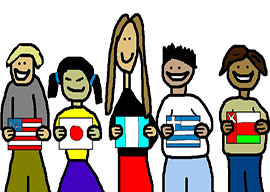
December 28, 2010

African-American kids would have outscored the students of any sub-Saharan African country that took the test (none did) and did outperform the only black country to participate, Trinidad and Tobago, by 25 points.
America’s public schools, then, are not abject failures.
They are educating immigrants and their descendants to outperform the kinfolk their parents or ancestors left behind when they came to America. America’s schools are improving the academic performance of all Americans above what it would have been had they not come to America.
What American schools are failing at, despite the trillions poured into schools since the 1965 Elementary and Secondary Education Act, is closing the racial divide.
We do not know how to close the gap in reading, science and math between Anglo and Asian students and black and Hispanic students.
And from the PISA tests, neither does any other country on earth.
The gap between the test scores of East Asian and European nations and those of Latin America and African nations mirrors the gap between Asian and white students in the U.S. and black and Hispanic students in the U.S.
Which brings us to “Bad Students, Not Bad Schools,” a new book in which Dr. Robert Weissberg contends that U.S. educational experts deliberately “refuse to confront the obvious truth.”
“America’s educational woes reflect our demographic mix of students. Today’s schools are filled with millions of youngsters, many of whom are Hispanic immigrants struggling with English plus millions of others of mediocre intellectual ability disdaining academic achievement.”
In the public and parochial schools of the 1940s and 1950s, kids were pushed to the limits of their ability, then pushed harder. And when they stopped learning, they were pushed out the door.
Writes Weissberg: “To be grossly politically incorrect, most of America’s educational woes vanish if these indifferent, troublesome students left when they had absorbed as much as they were going to learn and were replaced by learning-hungry students from Korea, Japan, India, Russia, Africa and the Caribbean.”
Weissberg contends that 80 percent of a school’s success depends on two factors: the cognitive ability of the child and the disposition he brings to class—not on texts, teachers or classroom size.
If the brains and the will to learn are absent, no amount of spending on schools, teacher salaries, educational consultants or new texts will matter.
A nation weary of wasting billions on unctuous educators who never deliver what they promise may be ready to hear some hard truths.